Family : Chaetodontidae

Text © Giuseppe Mazza

English translation by Mario Beltramini
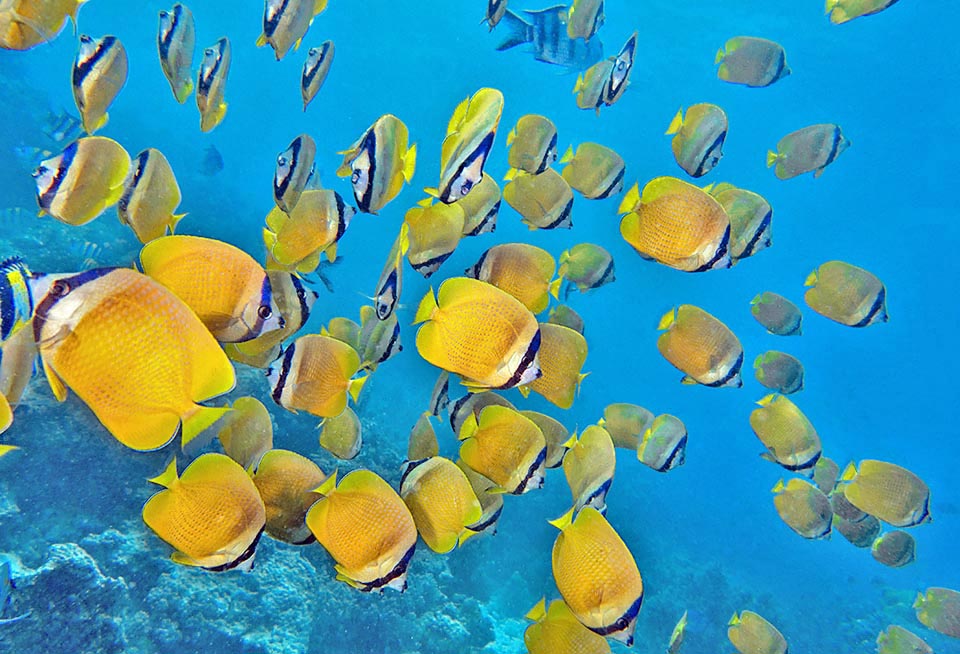
The Chaetodon kleinii is present in the Indo-Pacific tropical waters, from Red Sea and the African coasts to the Galapagos © Rafi Amar
The Klein’s butterflyfish (Chaetodon kleinii Bloch, 1790) belongs to the class of the Actinopterygii, the ray-finned fishes, to the order of the Perciformes and to the multi-coloured family of the Chaetodontidae that counts 132 species with about 90 butterflyfishes.
The name of the genus Chaetodon comes from the Greek “χαίτη” (khaite) = hair and “ὀδούς” = tooth, due to the teeth shaped like bristles, whilst that of the species, kleinii, in Latin “of Klein”, honours the memory of the German naturalist Jacob Theodor Klein, a “taxonomical precursor”, illustrious contemporary of Linnaeus, who wrote a treatise on the fishes and a book on the echinoderms.
Zoogeography
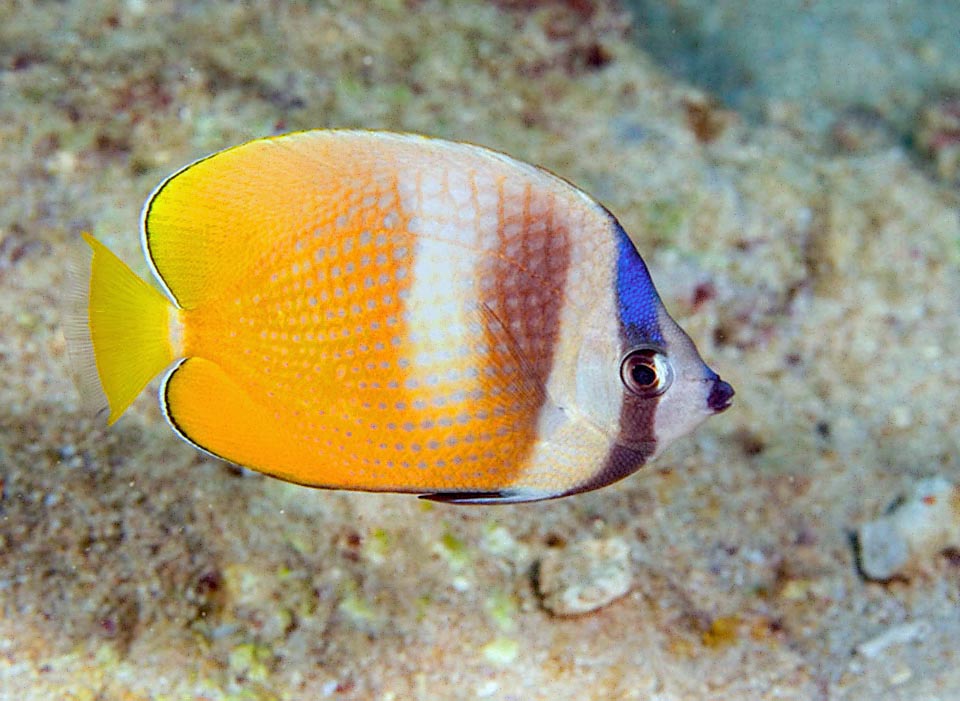
The yellow-orange livery shows three more or less marked pale vertical bands and one blue zone in the upper part of the dark band that masks the eye © Paddy Ryan
Starting from the Red Sea, the Chaetodon kleinii is present in almost all the tropical Indo-Pacific. Indicatively, we find it in Africa, along the coasts, from Somalia to South Africa, including Madagascar with adjacent islands, the Maldives, in India, Sri Lanka, Malaysia, Indonesia, Papua New Guinea, Micronesia and Australia.
From here it has colonized northwards, the Philippines, Taiwan and the southern part of Japan, and southwards the New Caledonia. Proceeding eastwards, we find it in the Fiji Islands, Tonga, Samoa and Kiribati. Finally, it reaches the Hawaii and then the Galapagos in South America.
Ecology-Habitat
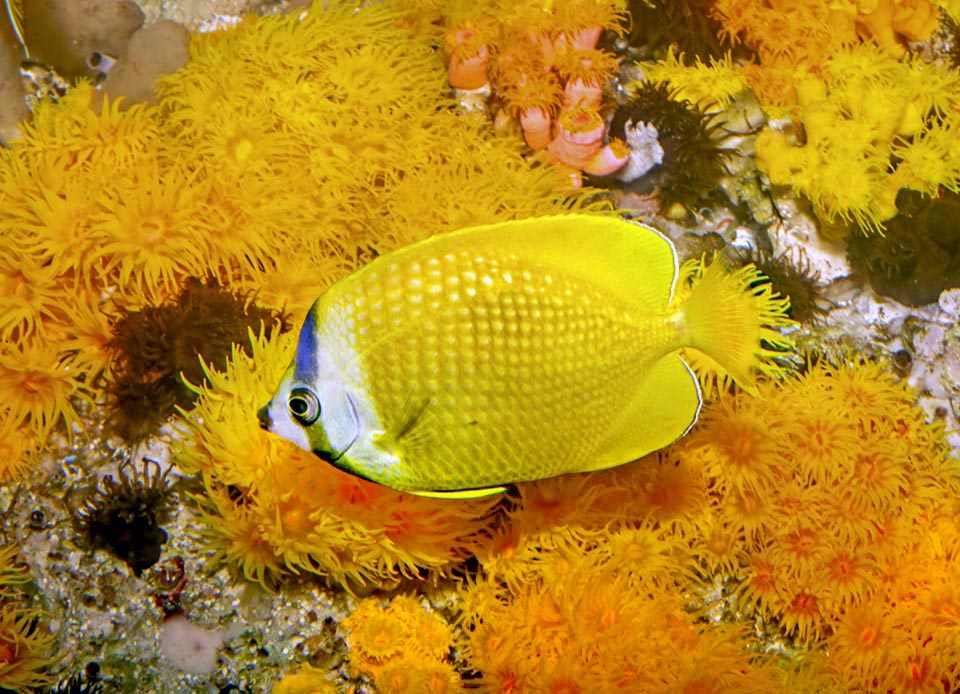
But seen the vast range, the colours are often locally different and the third pale band can fade until it disappears © Giuseppe Mazza
The Chaetodon kleinii usually swims under the 10 m of depth, going down to the 60 m at most, along the rocky coasts and mainly among the madreporic formations where are present the polyps it nourishes of, but it can be found also in shallow waters. It is frequent in the lagoons, especially in the canals fed by the tides, and on the outer side of the reefs.
Morphophysiology
It measures less than 14 cm. The body, flat laterally as usual among the Chaetodon, has a profile almost rectangular. The snout is short with dark lips, like the small zone between these last and the nostrils.
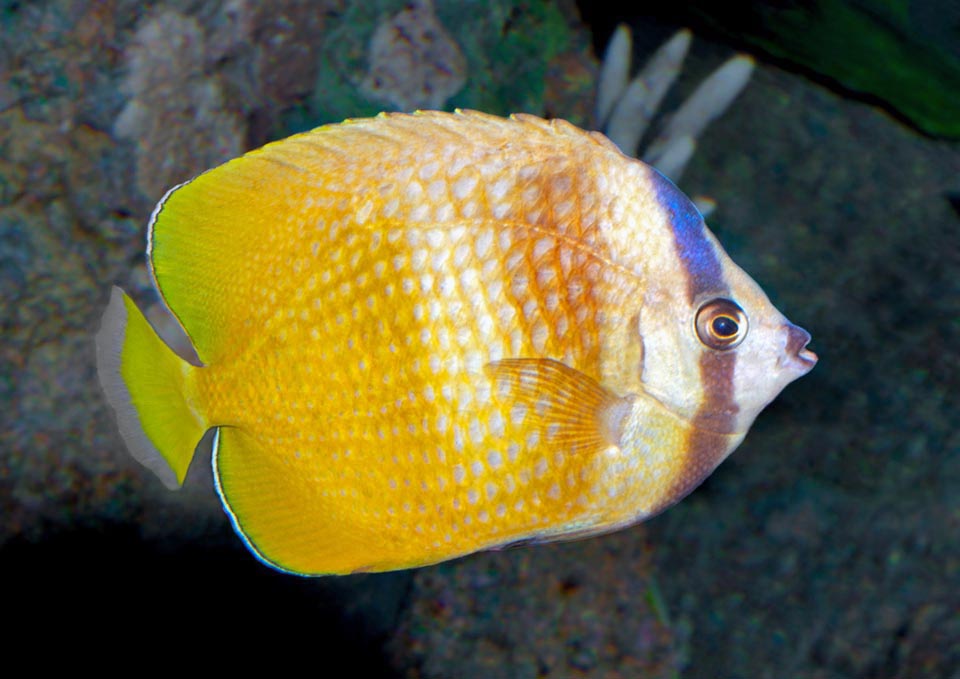
It swims in shallow waters, rarely reaching 60 m. It eats madrepores polyps, zooplankton, small crustaceans and algae © Giuseppe Mazza
The background colour, rather variable seen the presence of very far apart populations, usually displays 3 pale vertical belts, at times just hinted, in the fore part of the fish.
The first is located between the snout and the dark vertical band, bluish on top, that hides the eye reaching the pelvic fins; the second one is centered on the gills and the third is placed at the limit of the first half of the body. In Indonesia and in Palau these pale bands are usually more marked, whilst at the Hawaii and in other locations they almost disappear.
The dorsal fin and the anal end with an elegant black and white border; the pelvic ones are usually dark, but also orange; the pectorals are translucent.
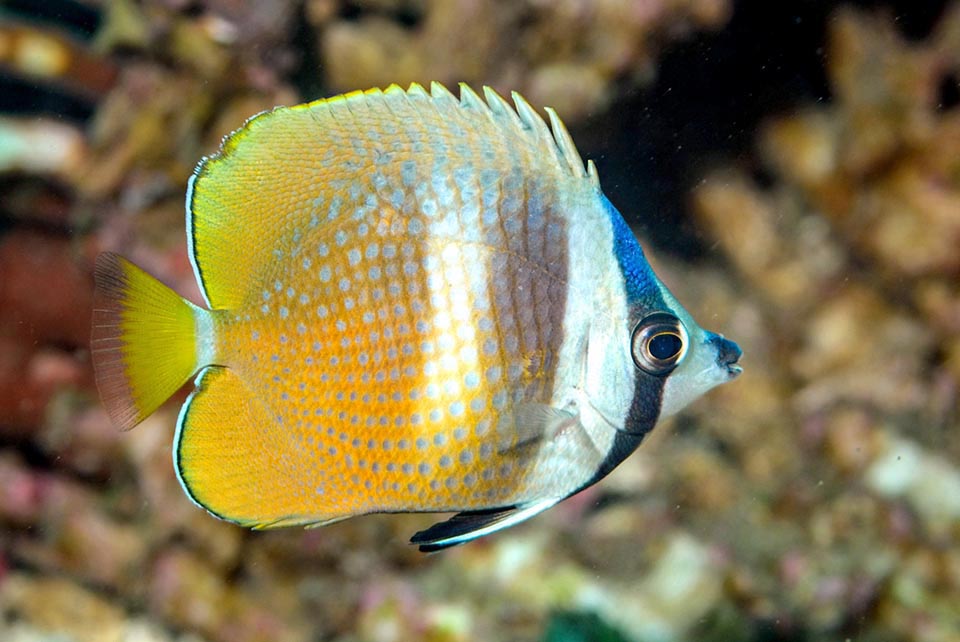
Like all butterflyfishes when in trouble it raises the dorsal fin to exhibit the spiny rays and to appear bigger to the eyes of the predators © Benoit Lallement
The caudal fin, preceded on the caudal peduncle by a small whitish vertical band, is yellow orange with green hues, as are the adjacent lobes of the dorsal fin and of the ventral, and ends in a translucent belt. The dorsal fin, erectile when the fish feels menaced, bears 13-14 spiny rays and 20-23 soft; the anal one 3 spiny rays and 17-20 soft; the pectoral ones are unarmed with 14-16 rays; the pelvic ones have one spiny ray with 5 soft ones and the caudal is more or less truncated.
Ethology-Reproductive Biology
The Klein’s butterflyfish nourishes of polyps of madrepores, zooplankton, small crustaceans and other benthic invertebrates it finds rummaging among the corals, but does not disdain the vegetables, mainly algae. It often swims in stable couples. For the marriage the spouses go up to the surface and the fecundation takes place in mid-water, with eggs fecundated at the flight by the male and immediately entrusted to the currents.
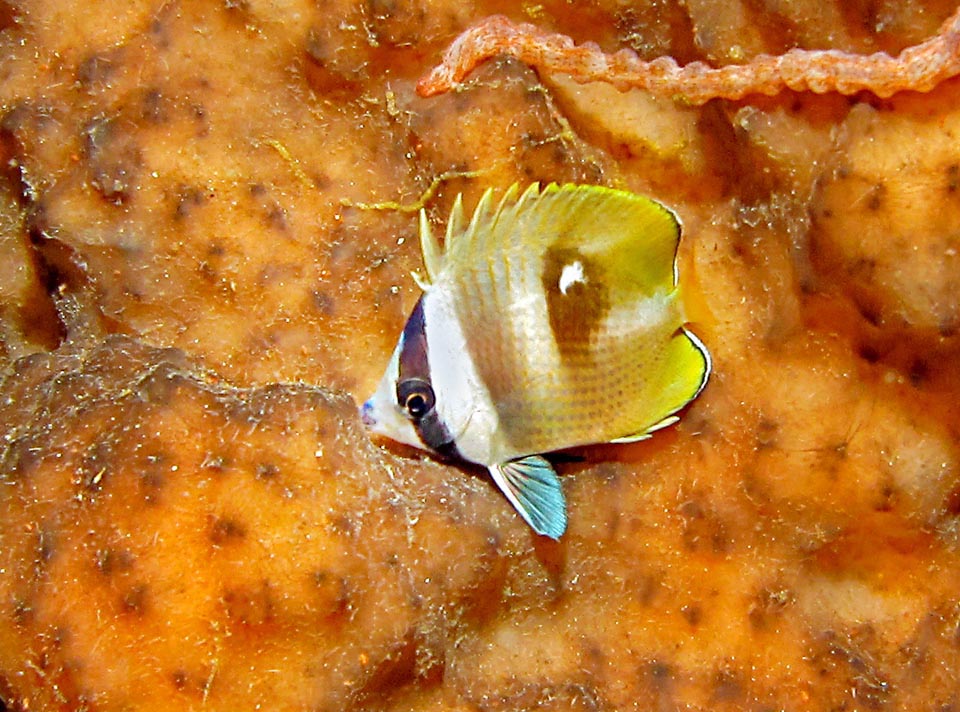
An already gritty juvenile protected by the mimetic livery displaying a fake eye. Chaetodon kleinii is not an endangered species © Bernard Dupont
They hatch the following day and the pelagic larvae go drifting for about 2 months until when the small fishes, 12-15 mm long, are at last capable to swim and to reach the bottom, often very far away from the place where their birth occurred.
With populations able of doubling their numbers in less than 15 months and a fishing vulnerability index very low, marking only a 10 on a scale of 100, it is not an endangered species.
Synonyms
Anisochaetodon kleinii (Bloch, 1790); Exornator exornator kleinii (Bloch, 1790); Chaetodon melastomus Bloch & Schneider, 1801; Chaetodon melammystax Bloch & Schneider, 1801; Chaetodon flavescens Bennett, 1831; Chaetodon virescens Cuvier, 1831; Chaetodon bellulus Thiollière, 1857; Chaetodon corallicola Snyder, 1904; Chaetodon cingulatus Fowler, 1934.
→ For general information about FISH please click here.
→ For general information about BONY FISH please click here
→ For general information about CARTILAGINOUS FISH please click here.
→ To appreciate the BIODIVERSITY of BONY FISH please click here.
→ To appreciate the BIODIVERSITY of CARTILAGINOUS FISH please click here.
